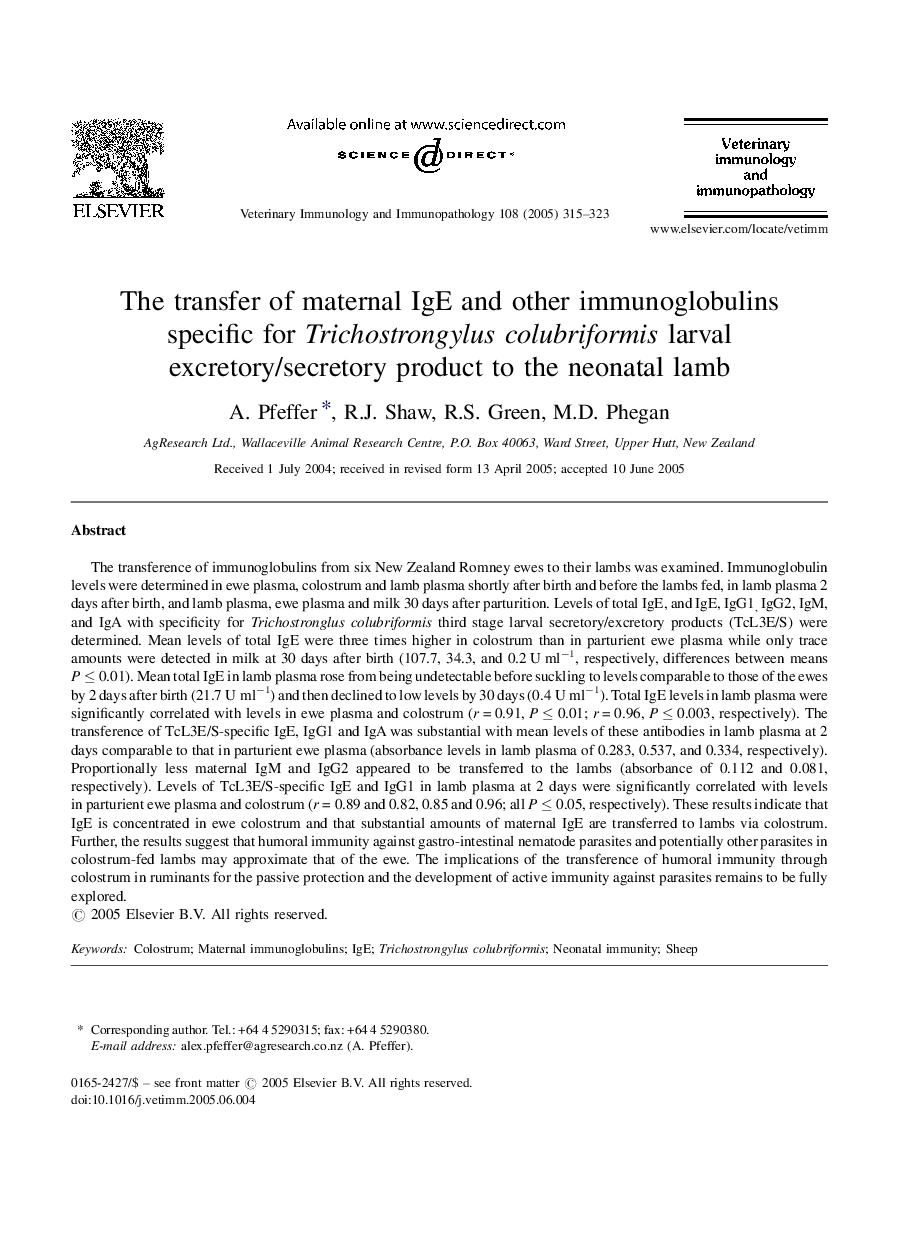| Article ID | Journal | Published Year | Pages | File Type |
|---|---|---|---|---|
| 8987849 | Veterinary Immunology and Immunopathology | 2005 | 9 Pages |
Abstract
The transference of immunoglobulins from six New Zealand Romney ewes to their lambs was examined. Immunoglobulin levels were determined in ewe plasma, colostrum and lamb plasma shortly after birth and before the lambs fed, in lamb plasma 2 days after birth, and lamb plasma, ewe plasma and milk 30 days after parturition. Levels of total IgE, and IgE, IgG1, IgG2, IgM, and IgA with specificity for Trichostronglus colubriformis third stage larval secretory/excretory products (TcL3E/S) were determined. Mean levels of total IgE were three times higher in colostrum than in parturient ewe plasma while only trace amounts were detected in milk at 30 days after birth (107.7, 34.3, and 0.2 U mlâ1, respectively, differences between means P â¤Â 0.01). Mean total IgE in lamb plasma rose from being undetectable before suckling to levels comparable to those of the ewes by 2 days after birth (21.7 U mlâ1) and then declined to low levels by 30 days (0.4 U mlâ1). Total IgE levels in lamb plasma were significantly correlated with levels in ewe plasma and colostrum (r = 0.91, P â¤Â 0.01; r = 0.96, P â¤Â 0.003, respectively). The transference of TcL3E/S-specific IgE, IgG1 and IgA was substantial with mean levels of these antibodies in lamb plasma at 2 days comparable to that in parturient ewe plasma (absorbance levels in lamb plasma of 0.283, 0.537, and 0.334, respectively). Proportionally less maternal IgM and IgG2 appeared to be transferred to the lambs (absorbance of 0.112 and 0.081, respectively). Levels of TcL3E/S-specific IgE and IgG1 in lamb plasma at 2 days were significantly correlated with levels in parturient ewe plasma and colostrum (r = 0.89 and 0.82, 0.85 and 0.96; all P â¤Â 0.05, respectively). These results indicate that IgE is concentrated in ewe colostrum and that substantial amounts of maternal IgE are transferred to lambs via colostrum. Further, the results suggest that humoral immunity against gastro-intestinal nematode parasites and potentially other parasites in colostrum-fed lambs may approximate that of the ewe. The implications of the transference of humoral immunity through colostrum in ruminants for the passive protection and the development of active immunity against parasites remains to be fully explored.
Related Topics
Life Sciences
Agricultural and Biological Sciences
Animal Science and Zoology
Authors
A. Pfeffer, R.J. Shaw, R.S. Green, M.D. Phegan,
